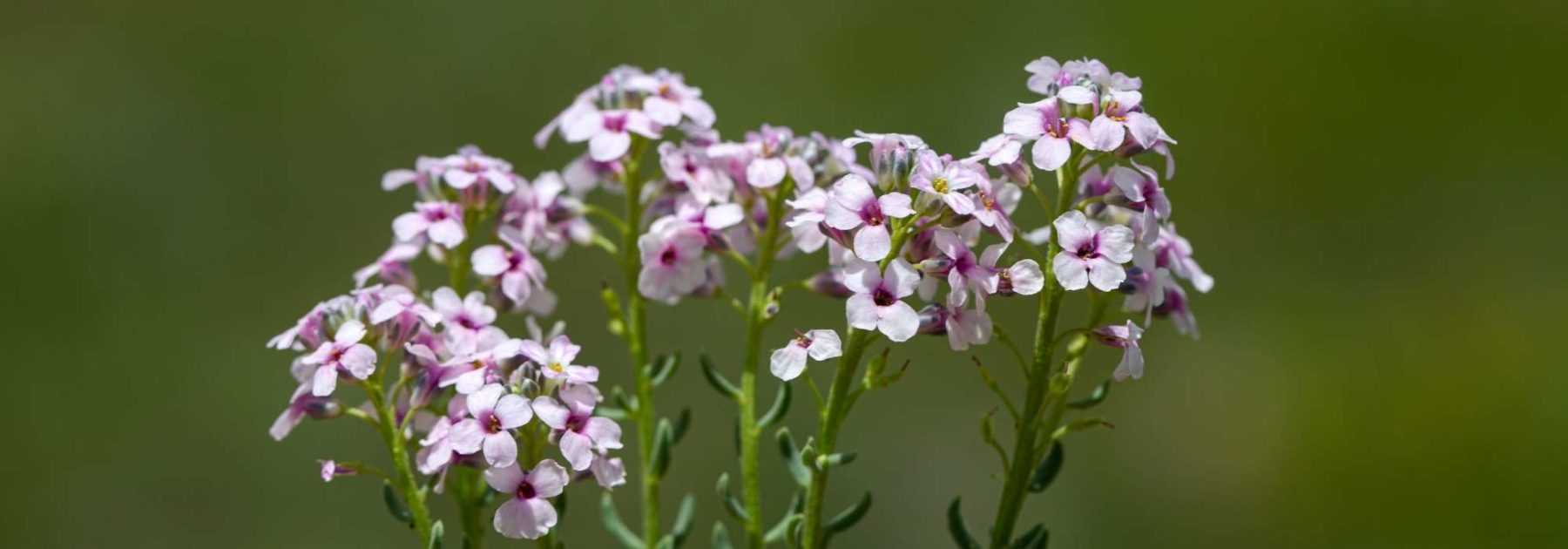
Aethionema: Planting and Growing
Contents
The Aethionema in a few words
- It forms a flowering cushion in well-drained and sunny locations
- This small perennial shrub doesn’t exceed 20 cm in height
- It’s cherished for its delicate and luminous flowering, in pink tones during late spring and summer
- Hardy, it thrives in full sun and suits dry or alpine gardens
- It’s a boon for brightening up dry rockeries, alpine containers or stone walls!
Our expert's advice
Aethionema is a small perennial or undershrub that flowers abundantly in late spring and summer. It forms a lovely cushion of often evergreen blue-green leaves, covered with abundant pink pom-pom flowering, similar to Aethionema armenum ‘Warley Rose’.
Hardy and robust, this small plant native to arid mountains thrives in sunny locations and well-drained soils, even calcareous ones. Reaching no more than 20 cm in height, Aethionema works wonders for flowering in rockeries, scree, dry slopes, paving, dry stone walls and alpine containers, forming small maintenance-free clumps.
Discover this excellent plant for dry gardens without watering!
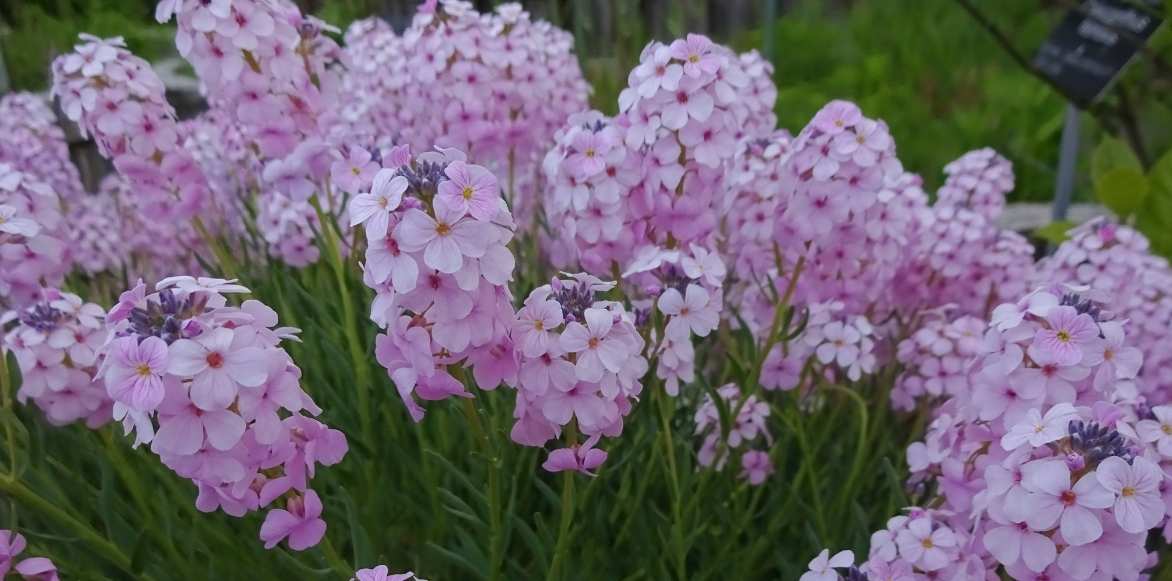
Aethionema grandiflorum
Description and botany
Botanical data
- Latin name Aethionema
- Family Brassicaceae, Cruciferae
- Common name Stonecress
- Flowering May to August
- Height 0.15 to 0.30 m
- Exposure Sun
- Soil type Stony (poor and well-drained), dry
- Hardiness -15 °C
The Aethionema is an evergreen undershrub perennial from the Brassicaceae or crucifer family, just like cabbages, alyssums or aubrietas. It grows naturally in sunny, calcareous montane areas of the Mediterranean basin, the Caucasus and Turkey.
While the genus includes around fifty species of undershrubs, perennials and annuals, the Aethionema armenum or Armenian stonecress and its varieties are the most well-known among gardeners. The Aethionema grandiflorum is a large-flowered version.
The Aethionema forms a lovely mound with a compact, bushy cushion-like habit, reaching 15 to 30cm in all directions. The erect stems bear evergreen to semi-evergreen foliage during the off-season, depending on the climate. The leaves are small, 0.5 to 1.5 cm long, short, linear and oblong. They display a blue-green hue.
This short-lived perennial makes up for its brief lifespan with a generous flowering period lasting nearly 4 months.
On this dense foliage, the pretty pompon-like flowers appear from May until August. Small cruciate flowers grouped in more or less loose terminal clusters bloom at the tips of the stems. Each flower measures 3 cm across and opens into four petals arranged in a cross, a characteristic feature of plants in this family. They have 6 stamens. Their colour is pale pink in the species, deeper pink in ‘Warley Ruber‘, the most famous cultivar, or bright pink in ‘Warley Rose’.
Once pollinated by insects, the flowers give way to elongated dry fruits in siliqua containing the seeds. When these capsules split open, the seeds fall to the ground and will readily germinate along pathways, between paving stones, on arid slopes, in the crevices of dry stone walls…
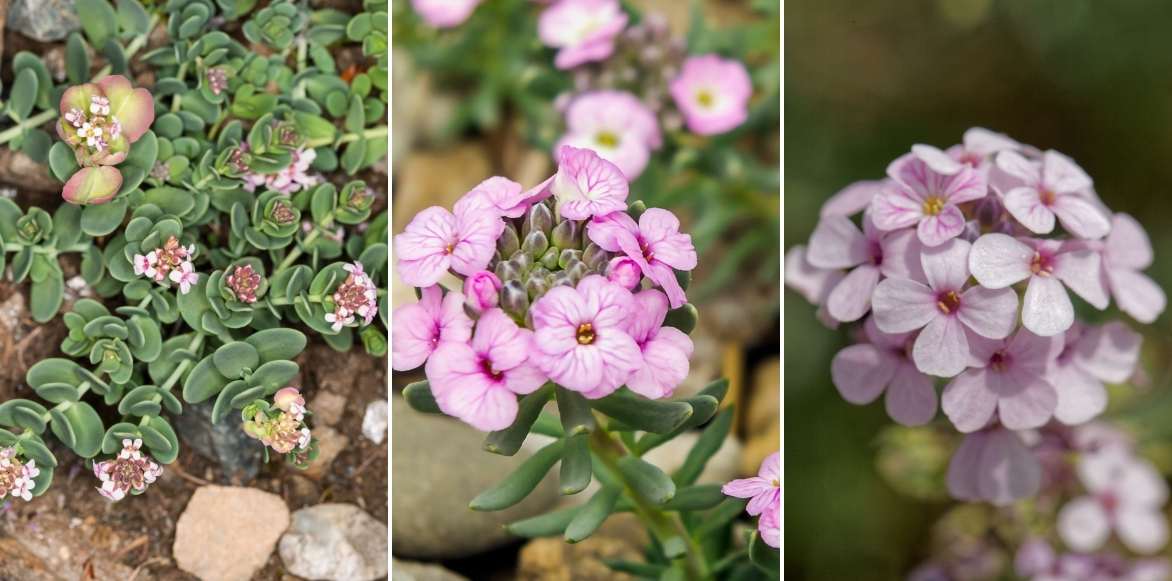
Aethionema tomasianum, Aethionema schistosum and Aethionema grandiflorum
Main species and varieties
[product sku=”8548″ blog_description=”This variety offers flowers in a deep pink, lasting almost 4 months! It will thrive in rockeries or along a stony border,” template=”listing1″ /]
Discover other Aethionema
View all →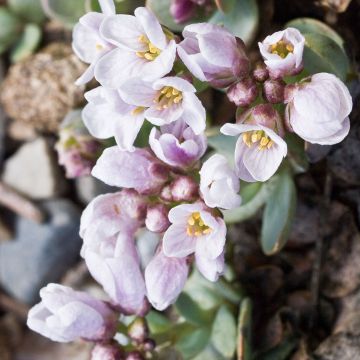
Available in 1 sizes
Available in 1 sizes
Planting Aethionema
Where to Plant It?
Hardy down to -15°C in well-drained soil, easy to grow, Aethionema is a montane plant that loves the sun, is water-wise and thrives in chalky, stony soils. Naturally growing in rock crevices and scree, it cannot tolerate stagnant moisture at its base. A relatively dry summer is always preferable to overly wet soils. In insufficiently dry winter soil, its hardiness may also be compromised.
This sun-loving perennial, preferring somewhat arid spots, is a ground-covering shrub that requires light, neutral to chalky, well-drained stony soil. Plant it along pathways, in rockeries, between paving stones, atop or along a low wall, or in alpine pots on sunny balconies and terraces.
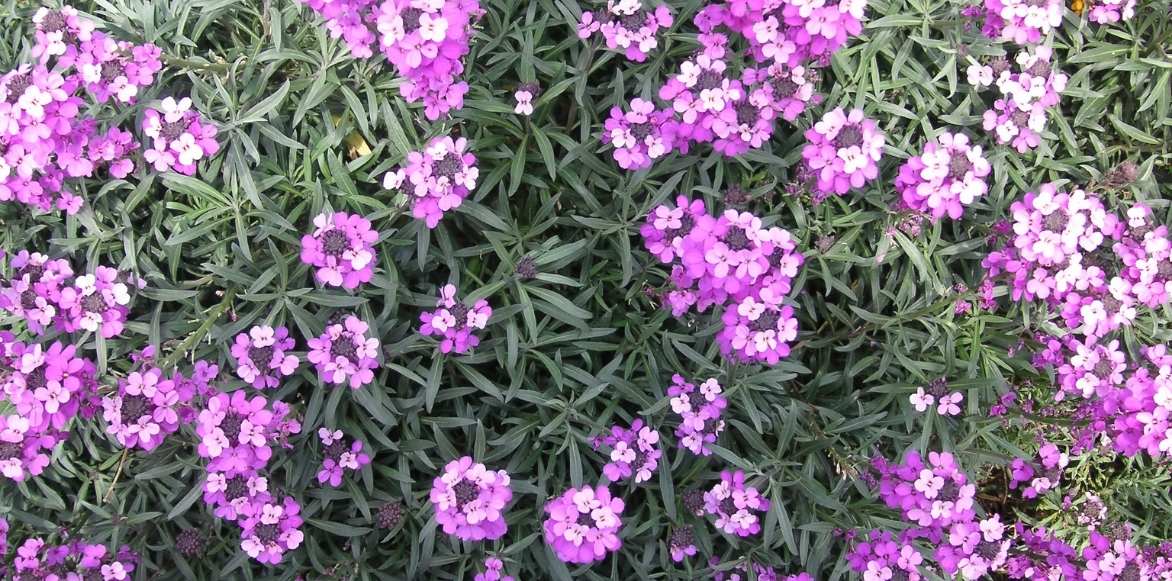
Aethionema ‘Warley Rose’
When to Plant It?
Plant Aethionema preferably in spring, from March to May in colder regions, or in September-October in warmer areas.
How to Plant It?
In the Ground
To create a dense, floriferous ground cover, allow for about 10 plants per m², spaced 30 cm apart.
- Soak the root ball before planting
- Loosen the soil thoroughly with a fork
- Add a layer of gravel if needed to improve drainage
- Dig a hole twice the size of the root ball
- If your soil is heavy, lighten it with coarse sand
- Position the plant and backfill without burying the collar
- Firm gently without damaging the young plant
- Water well
- Apply a mineral mulch (gravel, pebbles, slate…) to reduce summer watering
In Pots
- Add a thick drainage layer (gravel, pumice or clay pebbles) at the base
- Plant in a mix of compost and sand
- Water regularly
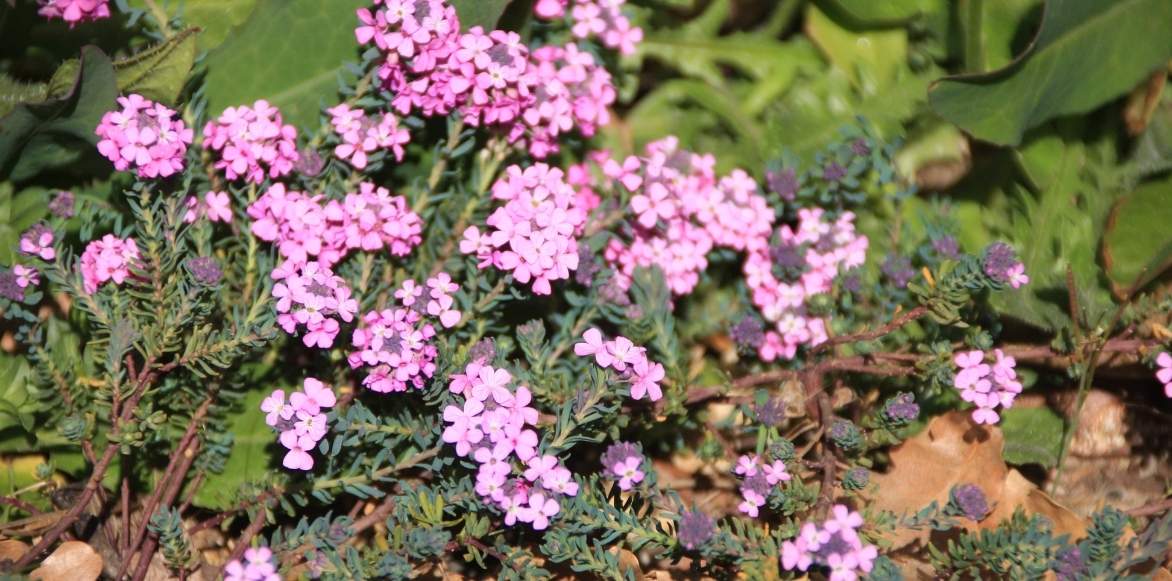
Aethionema armenum
Cultivation and care
Aethionema requires no particular care. It’s truly an easy-care plant, perfect for dry gardens. When planted in the ground, water regularly during the first summer, especially in dry spells. After that, the plant will be content with rainwater. A mineral mulch to keep the soil cool and occasional light watering will be needed during prolonged heat.
In pots, water more regularly before the compost dries out completely. Allow the top layer of compost to dry out between waterings. You can fertilise at the beginning and end of summer with a flowering plant fertiliser to support flowering. Repot every 2-3 years and top-dress annually in spring.
Remove faded flowers regularly to prolong flowering as much as possible. After flowering, use secateurs to cut back spent flower stems to limit seed spread and invasive self-sowing.
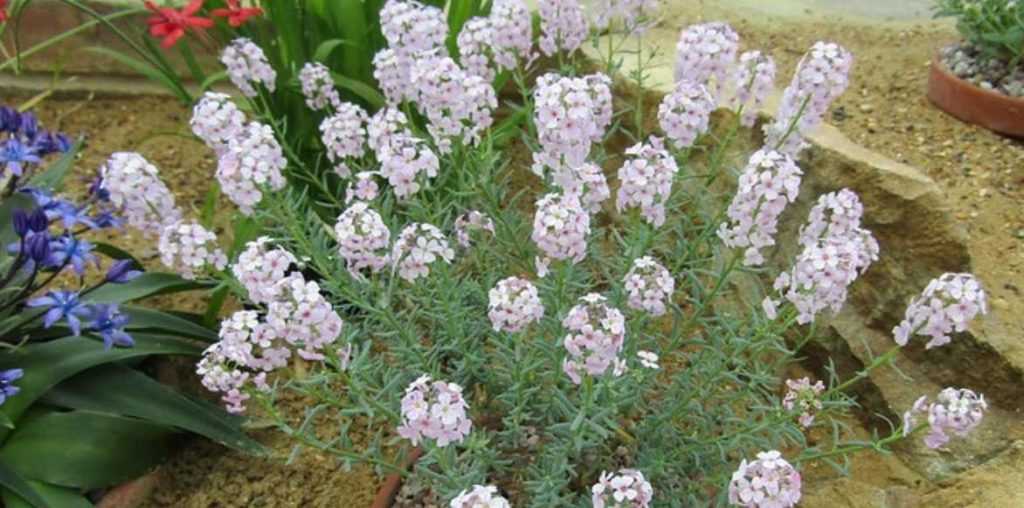
Aethionema cordifolium in a dry garden (© Leonora Enking)
Propagation
You can propagate Aethionema by sowing, though it usually self-seeds naturally. Sow under a cold frame in autumn or very early spring for planting out in the garden a year later. However, we recommend propagation by cuttings as the simplest method for multiplying this undershrub.
Propagation by cuttings
- Take a non-flowering shoot during summer
- Remove the lower leaves
- Insert the lower part into a mix of compost and sand
- Keep in partial shade and maintain moist substrate
- Pot on after two months then transplant the following spring
Pair
With excellent resistance to drought and very sunny exposures, Aethionema are perfect for dry gardens, low-maintenance gardens, holiday homes, alpine or Mediterranean gardens. From spring to summer, they will easily flower alongside other small sun-loving perennials that bloom in similar tones, such as Sea Thrift, Caucasian Arabis, Moss Phlox, Fleabane, Bloody Cranesbill, Catmint, or Dianthus gratianopolitanus ‘Badenia’, with which they will quickly create charming and floriferous scenes.
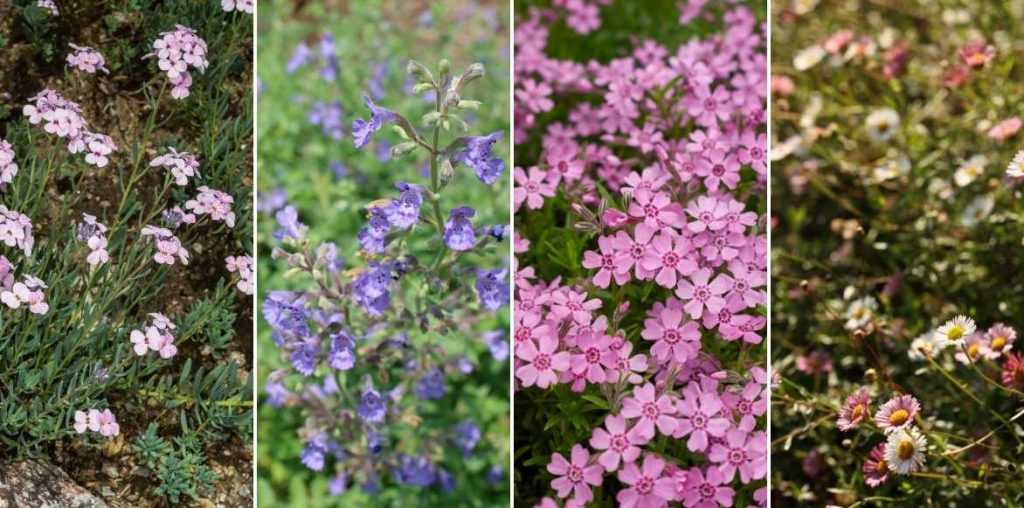
In a wild rock garden, Aethionema grandiflora alongside Catmint, Moss Phlox and Fleabane
In a stone trough or container, their companions can also include alpine and montane plants such as Sweet Alyssum and Aubrieta.
They complement a pink/mauve theme alongside lavenders, asters and pinks. With their pink flowers, they will also form complementary pink/yellow-green associations with Allium moly and yarrows.
At the edge of a mineral border, they will pair well with sedums and other low-growing plants that tolerate summer drought, such as Maiden Pink or Heath Pink, Thymus capitatus. They will add a delicate pastel touch, scattered among grasses like Feather Grass.
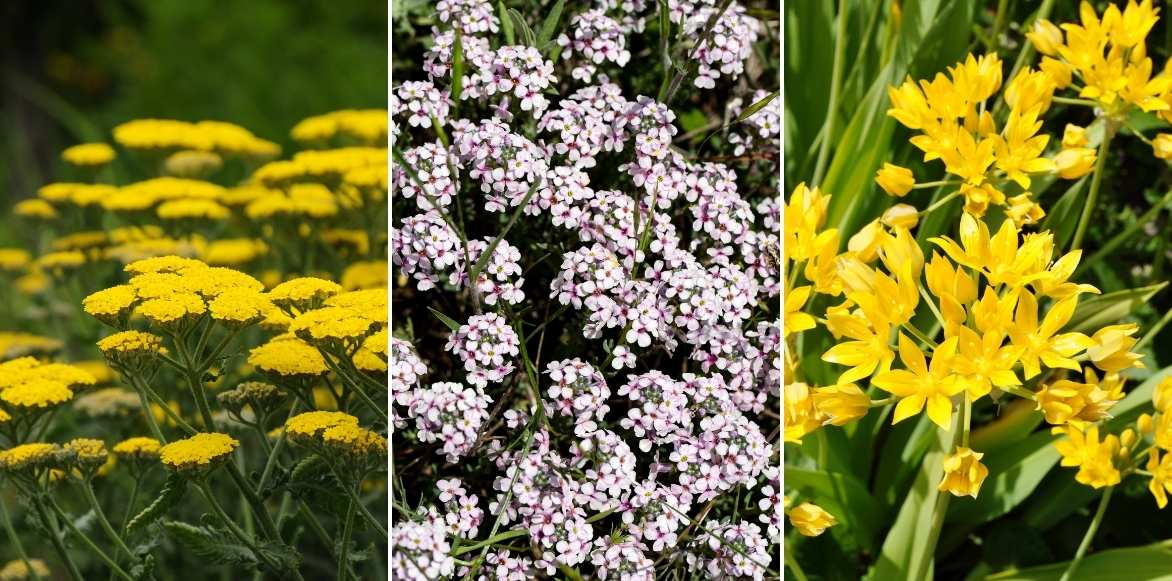
Alongside yellow flowering plants, here Yarrow ‘Moonshine’ on the left and Allium moly on the right
Useful resources
- Discover our perennials for rockeries!
- What to plant in a dry garden?
- Find THE perfect ground-cover perennial that flowers all summer long!
- Long live pink gardens!
- Subscribe!
- Contents


































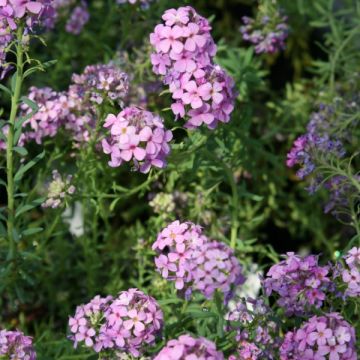
Comments